Key takeaways:
- Progress monitoring is essential for understanding and supporting the growth of students with dyslexia, allowing educators to tailor instruction effectively.
- Regular check-ins and reflection sessions help students recognize their progress, boosting motivation and confidence.
- Utilizing diverse instructional techniques and tools, such as digital platforms and personalized assessments, enhances engagement and learning outcomes.
- Creating a supportive environment fosters open discussions about challenges, turning setbacks into learning opportunities for students.
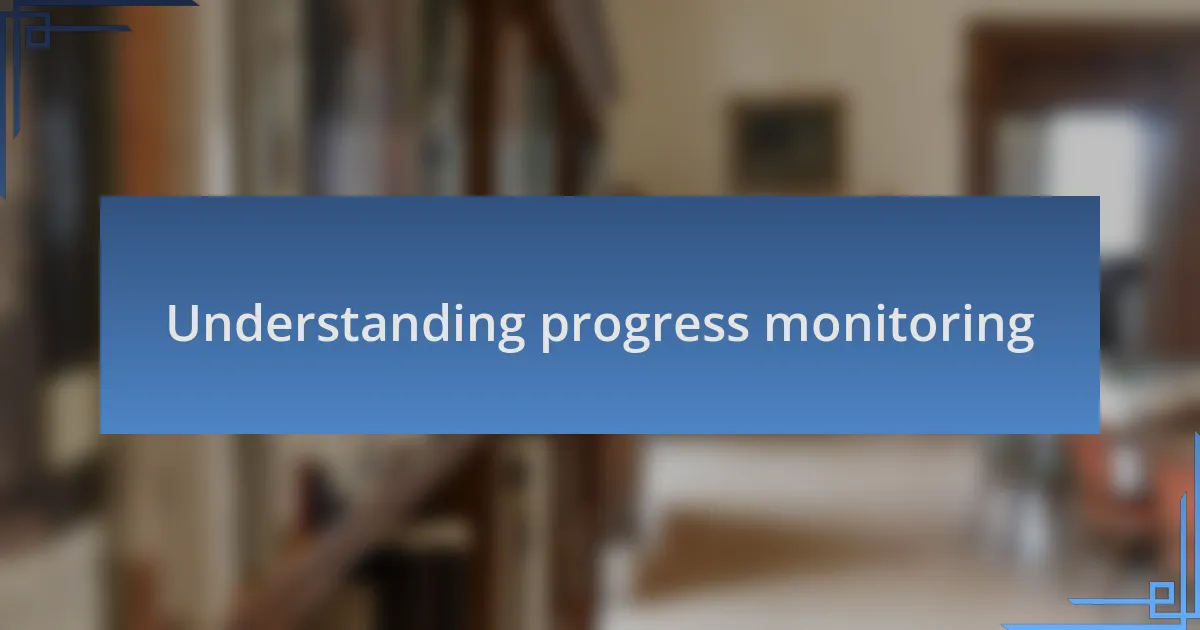
Understanding progress monitoring
Progress monitoring is a critical tool in identifying how well individuals with dyslexia are responding to intervention. I remember working with a student who initially struggled to decode simple words. Through consistent progress monitoring, we were able to track her small victories each week, and it was incredibly rewarding to see her confidence grow as she improved.
When I think about progress monitoring, I often ask myself: How can we truly know if our efforts are making a difference? It’s not just about numbers or scores. Each data point represents a child’s journey, filled with challenges and triumphs. One day, a student might read a sentence aloud without hesitation; the next, he might have trouble. This ebb and flow is normal and highlights the importance of not only tracking but also understanding the context of each child’s learning experience.
Regularly assessing a learner’s progress helps in tailoring instruction to meet their unique needs. For instance, I once administered a brief assessment and noticed a particular pattern in a student’s errors. This insight allowed me to adjust my teaching strategies, ensuring the instruction was both relevant and effective for him. Have you ever considered how a slight shift in approach can lead to remarkable progress? It’s those moments of clarity that truly underscore the value of ongoing monitoring.
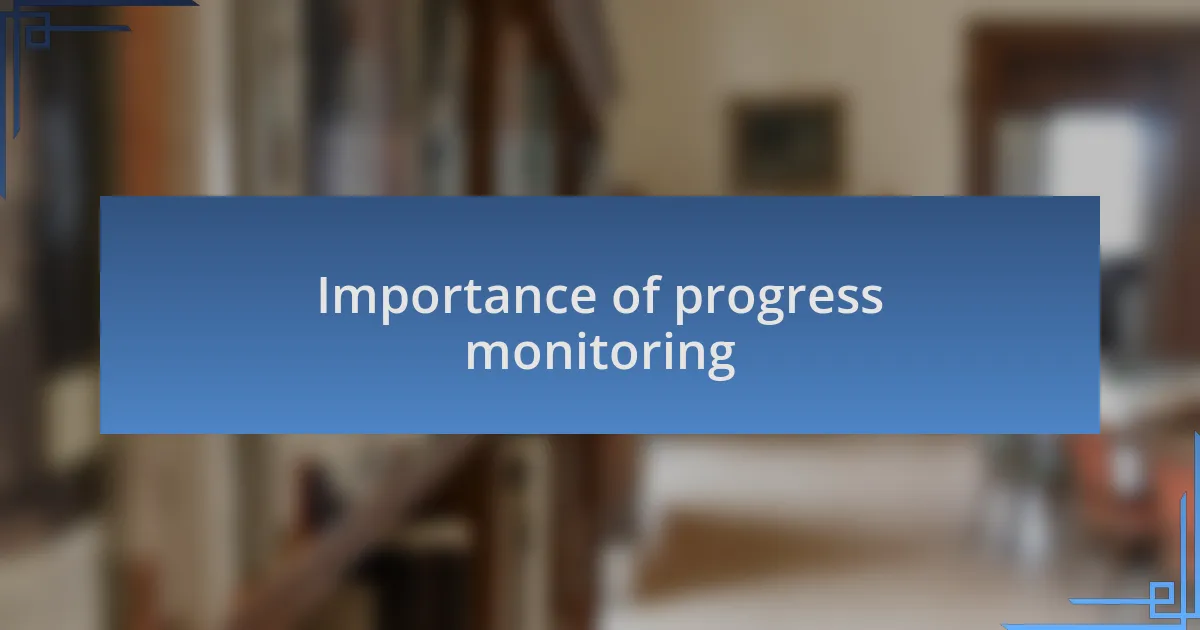
Importance of progress monitoring
Understanding the importance of progress monitoring cannot be overstated, especially in the context of supporting individuals with dyslexia. I recall a particularly touching moment when a parent expressed her concern about her child’s slow progress. By showing her the progress made over just a few weeks, I could see a glimmer of hope ignite in her eyes. It made me realize that progress monitoring isn’t just about data; it’s a vital communication tool that assures families that their children are on a path toward improvement.
Moreover, it fosters a culture of accountability—not just for the students but for educators too. In my experience, routinely checking in on progress helps me stay focused on what truly matters. I remember a time when I hesitated to implement a new strategy because I was unsure if it would be effective. However, monitoring my students’ responses allowed me to adapt and refine my approach quickly. This iterative process kept my teaching relevant and responsive to their needs, reminding me that teaching is as much about flexibility as it is about planning.
Ultimately, progress monitoring promotes a sense of empowerment among students. When they can visually see their growth, it builds their confidence and motivation. I often ask my students how they feel when they notice an improvement in their skills, and their reactions are priceless. Whether it’s a proud smile or a renewed determination, those moments reinforce my belief that tracking progress is crucial. How do you celebrate those little victories in your own work? I find that acknowledging each step can make all the difference in a learner’s journey.

Tools for effective monitoring
When it comes to progress monitoring tools, I’ve found that digital platforms offer incredible insights. I remember using an app that tracked my students’ reading fluency over time. By analyzing their data visually, I was able to pinpoint specific areas where they struggled, allowing me to tailor my instruction more effectively. Have you ever used a tool that transformed your approach in this way?
Another powerful tool is the use of anecdotal records. I often keep a journal where I document my students’ daily challenges and triumphs. One particular entry that stands out involves a student who initially resisted reading aloud. By regularly noting their increased participation, I could celebrate small victories and encourage a more positive mindset. Do you find that reflecting on these moments helps solidify your understanding of your learners’ needs?
Finally, I can’t stress enough the value of one-on-one check-ins. I make it a point to schedule brief sessions with each student, where we discuss their progress. I recall one such conversation where a student shared how a specific strategy had helped them overcome a hurdle. The joy in their voice reinforced the importance of these monitoring moments. Have you tried implementing similar check-ins? It can be a gamechanger in fostering growth and building relationships.
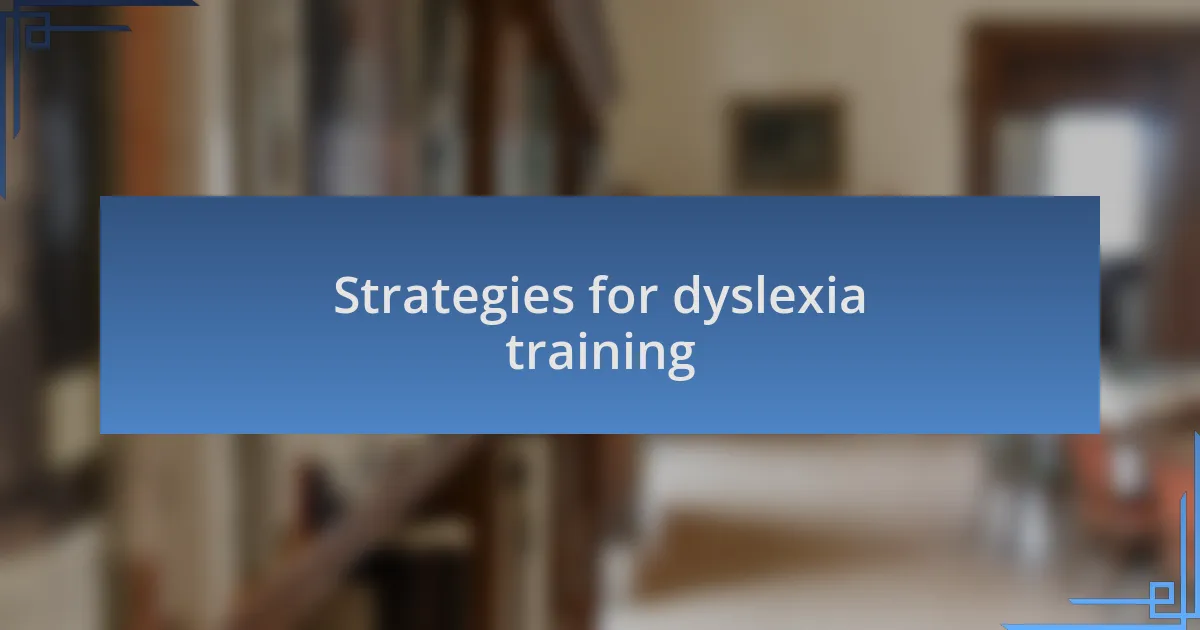
Strategies for dyslexia training
When it comes to strategies for dyslexia training, I find that multisensory learning techniques truly make a difference. For instance, I vividly remember incorporating tactile materials like textured letters into my lessons. The joy and excitement on my students’ faces as they traced the letters with their fingers were unforgettable. Have you ever noticed how engaging all senses can create memorable learning moments?
Another effective strategy is to use structured literacy approaches. When I implemented explicit instruction in phonemic awareness, I saw my students begin to connect sounds to letters with newfound confidence. One student, who had previously struggled, surprised me with their ability to blend sounds during a recent lesson. It’s moments like these that remind me of the power of structured techniques. Have you tried this approach in your teaching?
In addition to these methods, fostering a supportive classroom environment is crucial. I often encourage students to share their experiences and challenges in a safe space. After one session where we discussed their feelings around reading, a shy student expressed relief in hearing others share similar struggles. This not only built camaraderie but also motivated everyone to tackle their learning obstacles together. Have you considered the impact of emotional support on your students’ progress?
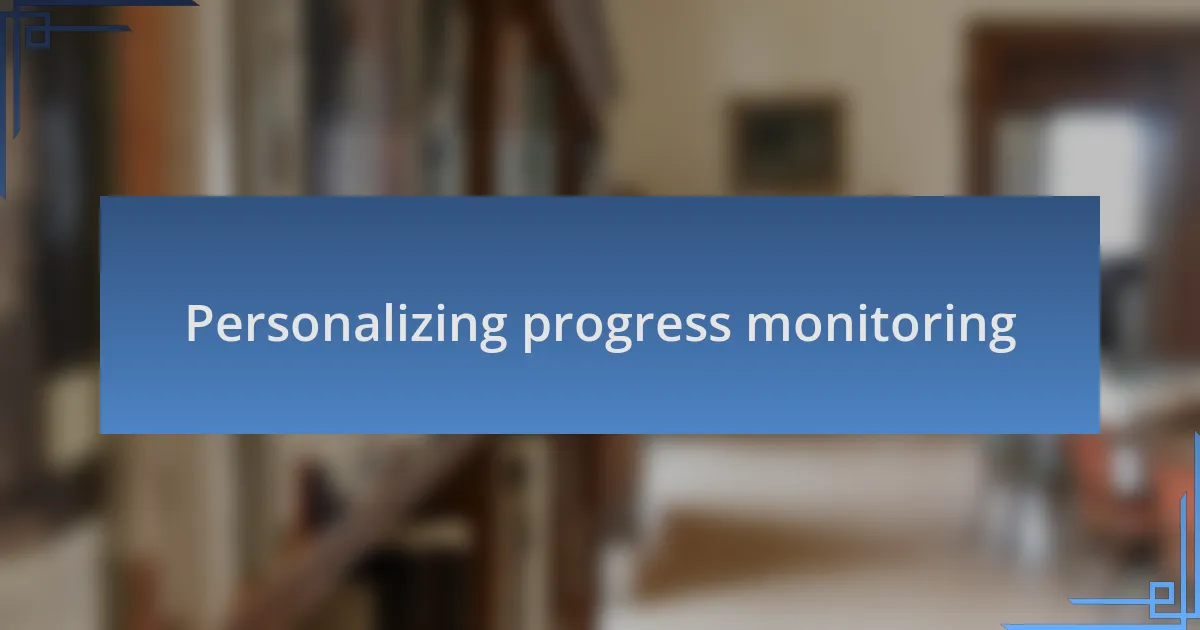
Personalizing progress monitoring
When I think about personalizing progress monitoring, I recall a student who thrived when I tailored assessments to her interests. By integrating her love of animals into reading tasks, I noticed her enthusiasm skyrocketing. Have you tried using your students’ passions to guide how you track their progress?
I’ve found that incorporating frequent, informal check-ins can also be a game-changer. For one student, simple conversations about his daily reading challenges helped me tweak my approach and adjust goals in real-time. This ongoing dialogue not only kept him engaged but also provided invaluable insights that formal tests simply couldn’t capture. How often do you adapt your progress monitoring based on student feedback?
Another effective method I’ve embraced is using digital tools to track progress. One platform I used allowed students to set personal goals and reflect on their achievements visually. This not only empowered them but also encouraged a sense of ownership over their learning journey. Have you explored technology to enhance your monitoring strategies?

Reflecting on individual progress
Reflecting on individual progress has been a pivotal part of my experience. I recall a moment when I sat down with one of my students, who struggled to articulate her achievements. By encouraging her to maintain a journal, she began noting down small victories, like mastering a difficult word. It was an eye-opener for both of us—how often do we overlook the milestones on the way to our bigger goals?
During these reflection sessions, I’ve noticed an interesting trend: students often underestimate their progress. There was a boy in my class who was reluctant to share his thoughts. When I encouraged him to compare his earlier work with his recent efforts, he was genuinely shocked by how far he had come. Seeing their progress in black and white can ignite a spark of motivation. Have you ever witnessed an unexpected boost in a student’s confidence simply through reflection?
I also find that discussing setbacks openly fosters an environment of trust and growth. In one instance, a student faced a significant challenge with a specific reading strategy we were practicing. Instead of shying away from it, we explored it together, analyzing what didn’t work and why. This deep reflection not only calmed his anxiety but turned a moment of frustration into a learning opportunity. Wouldn’t it be rewarding to turn challenges into stepping stones for future success?
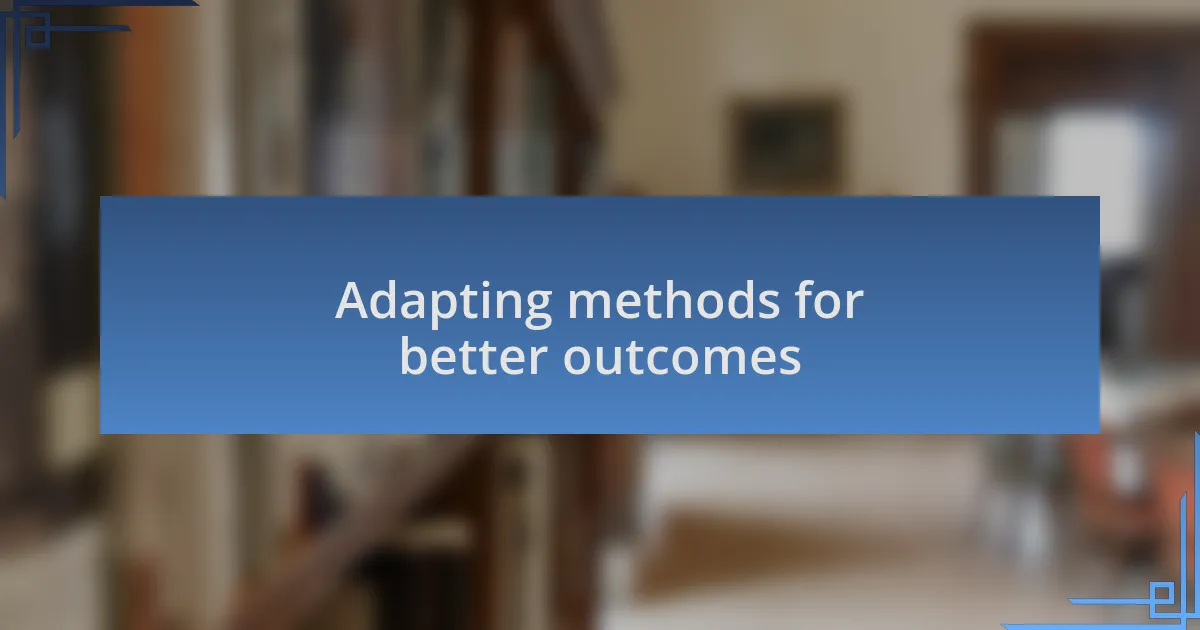
Adapting methods for better outcomes
When it comes to adapting methods for better outcomes, I’ve often found that implementing varied instructional techniques can lead to remarkable results. For example, I had a student who thrived on visual aids but struggled with auditory instructions. By incorporating more graphic organizers into our lessons, not only did his comprehension improve, but his enthusiasm for learning soared. Isn’t it fascinating how a slight tweak in delivery can illuminate a student’s potential?
Another approach I’ve embraced is flexibility in my assessment methods. I once had a student who struggled with traditional testing formats, leading to unnecessary stress. By allowing him to demonstrate his understanding through verbal presentations instead, I witnessed not only his confidence grow but also a deeper understanding of the material. Have you considered how diverse assessment strategies might reveal hidden strengths in your learners?
Lastly, providing options for students to choose their learning activities has proven invaluable. During a project on storytelling, I let my students select their mediums—some wrote stories, while others created digital presentations. The excitement in the classroom was palpable as they explored their creativity. How often do we underestimate the power of choice in motivation and engagement?